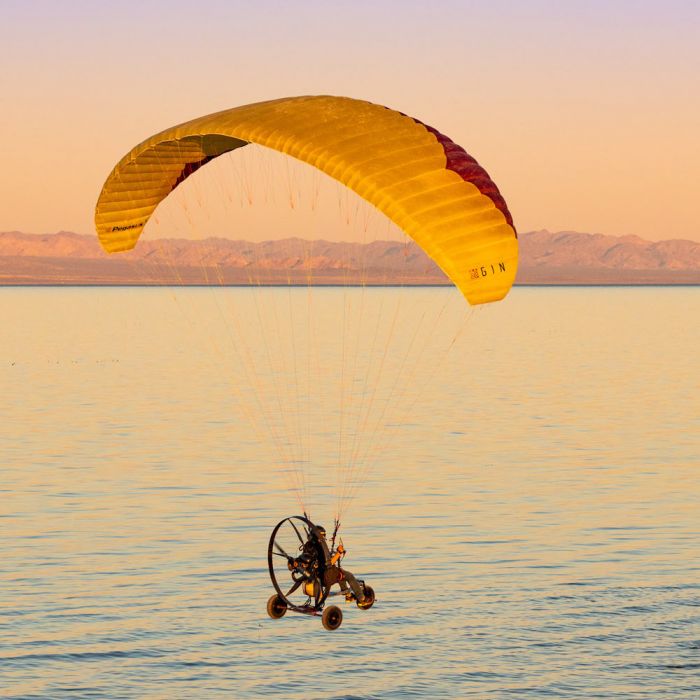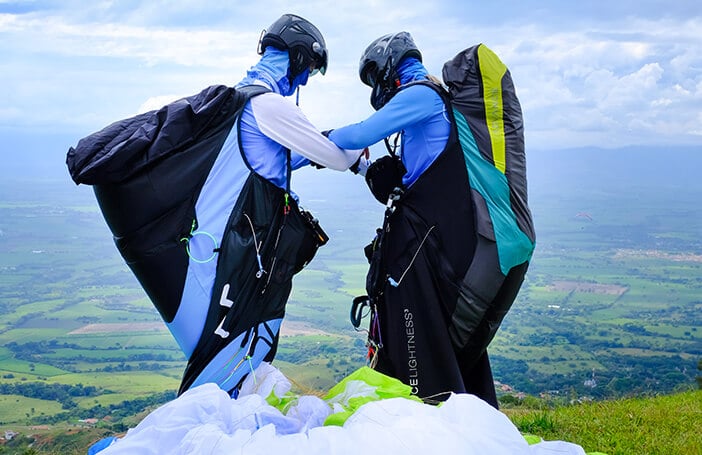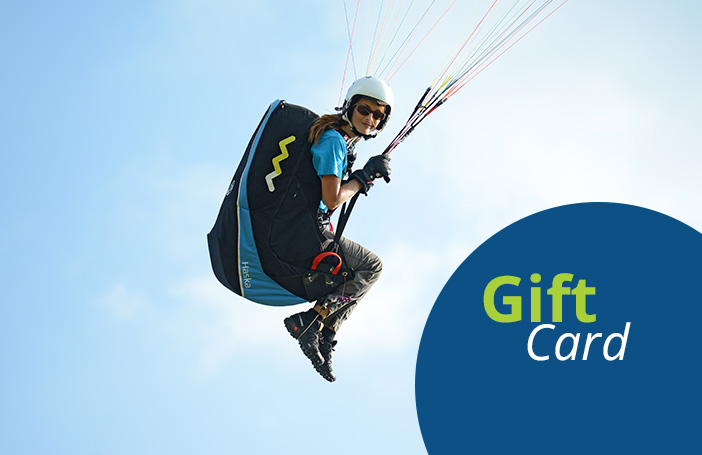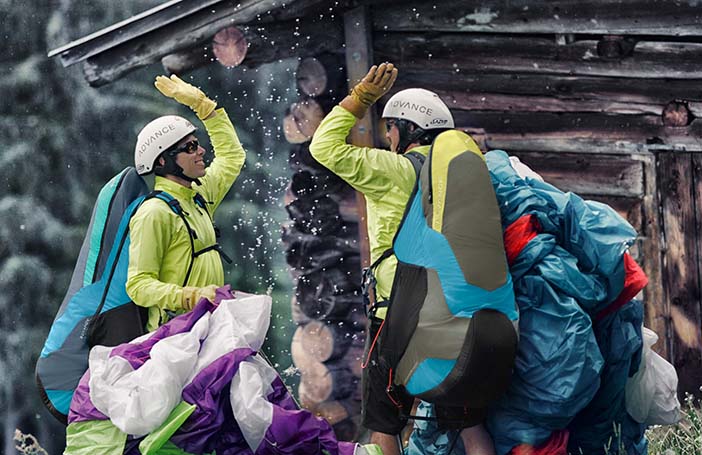Technical data
| SIZE |
24 |
26 |
28 |
30 |
| Weight range (kg) |
65-90 |
75-100 |
85-110 |
95-120 |
| Flat area (m2) |
24.2 |
26.4 |
28.4 |
30.7 |
| Flat span (m) |
10.76 |
11.24 |
11.67 |
12.14 |
| Flat aspect ratio |
4.8 |
4.8 |
4.8 |
4.8 |
| Projected area (m2) |
20.9 |
22.8 |
24.7 |
26.7 |
| Projected span (m) |
8.67 |
9.06 |
9.41 |
9.79 |
| Projected aspect ratio |
3.6 |
3.6 |
3.6 |
3.6 |
| Number of cells |
36 |
36 |
36 |
36 |
| Glider weight (kg) |
4.45 |
4.65 |
4.95 |
5.25 |
| Certification |
EN A |
EN A |
EN A |
EN A |
| Certified weight range (paramotor) (kg) |
65-120 |
75-130 |
85-140 |
95-160 |
| Certification (paramotor) (kg) |
DGAC |
DGAC |
DGAC |
DGAC |
Load chart behaviour
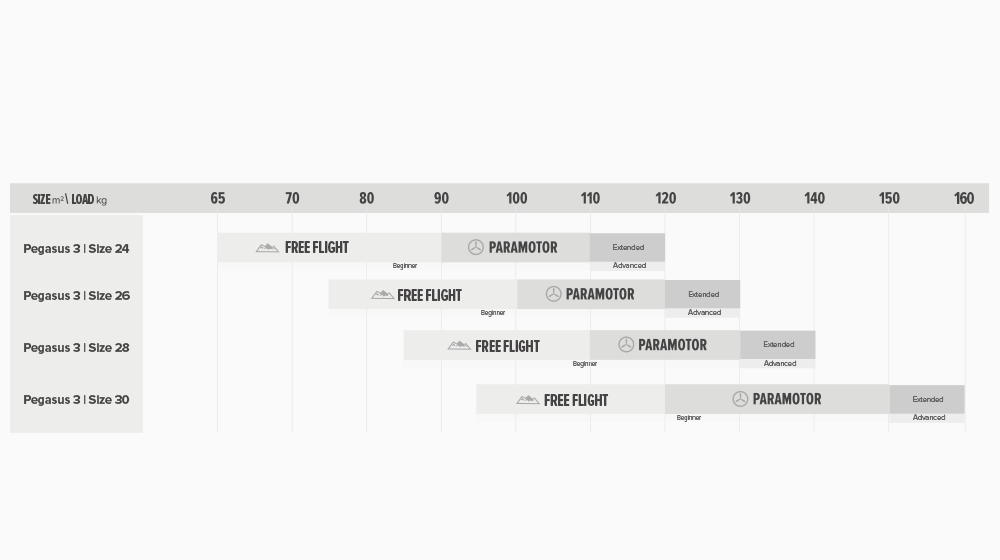
Colours
Standard colours: Coral, Lemon, Blue.
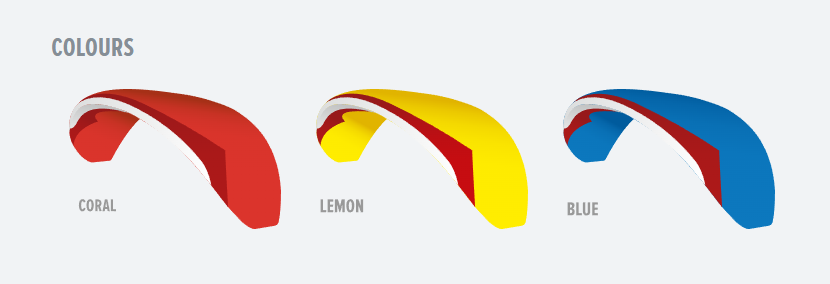
Package
- Inner bag
- Compression strap
- GIN stickers
- Repair kit
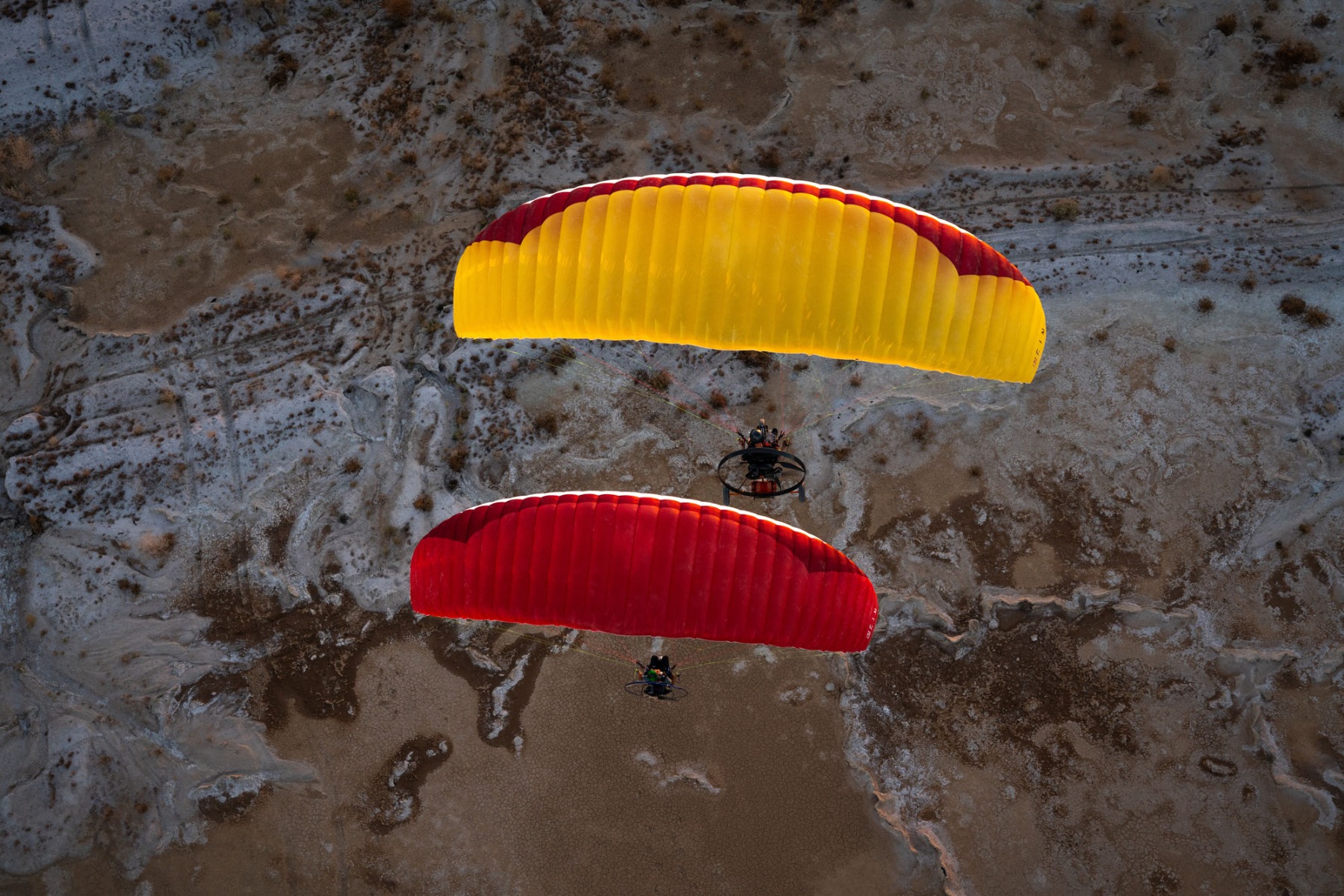
Pegasus: THE FIRST STEP IS THE DEEPEST
- even easier inflation and take-off thanks to an exclusive new fabric developed by GIN and Myungjin
- shorter riser for easier management and control
- forgiving-yet-fun handling
- advanced risers for easy big ears and stable accelerated flight
Up, up and away
Take-offs can be nerve-racking, but not with the Pegasus 3. The risers are easy to sort on take-off, the wing comes up smoothly and cleanly, the lift-off comes early and over-enthusiastic control inputs are forgiven. Take-offs will quickly become an element of flight to enjoy rather than to fear!
Durable, yet light
A first wing like the Pegasus needs to be durable, as it will be groundhandled a lot. Yet lighter wings generally offer better slightly better inflation and take-off, besides being more compact. For this reason, GIN was motivated to develop a new PU-based composite coating fabric in partnership with Korean fabric manufacturer Myungjin. After years of development and over 2 years of field testing, this fabric has proved itself to offer the best of both worlds: durability and light weight.
For paramotor or free flight
The Pegasus 3 can be flown with or without motor. Powered pilots can gain a gentle introduction to the joys of free flight, and vice versa.
Designer's notes
GIN test pilot Laurent Salinas explains the philosophy behind the Pegasus 3:
“Almost everyone buying a first wing likes to imagine that the wing should be both “hot” and “safe”. But the reality is that safety is far more important. Beginners starting with wings ‘to grow into’ or featuring reflex profiles, often end up with broken props, scraped knees or even worse.
Starting with the right wing means you will learn faster, and have a wider safety margin in a variety of conditions.
We have always believed good take-off characteristics to be the most important quality for a beginner wing. With the Pegasus 3, we were able to improve this even more, thanks to a new fabric developed by GIN and Myungjin. The new fabric is lighter but also more durable than standard fabrics and this improves inflation, take-off and all round handling. The wing comes up easy and straight in all conditions, and is super quick to start flying which is ideal in nil wind. Take-offs are always smooth and fully controlled.
Besides safety, the Pegasus 3 is still a versatile wing that pilots can really enjoy. You can confidently fly the Pegasus 3 in midday thermals, both with and without a motor. The controls are responsive yet progressive – it’s never dull. The wing responds to your every command, but at the same time, it’s still incredibly forgiving if you are over enthusiastic.
The Pegasus 3 is a versatile wing that will provide you many years of flying pleasure.”
Features
- Equalized Pressure Technology (EPT) for better inflation
- simple and clean 3 riser layout with split A risers for easy big ears
- riser with speed system (PG) and trimmer (PPG)
- additional lower brake pulley for very high attachments (e.g. trike)
- increased brake length and lower brake pulleys for trike (sizes 28 and 30)
- colour-coded trim strap for more precise adjustment
- colour-coded lines for easy identification
- exclusive new fabric developed by GIN and Myungjin offers outstanding durability with light weight
- trailing edge mini-ribs
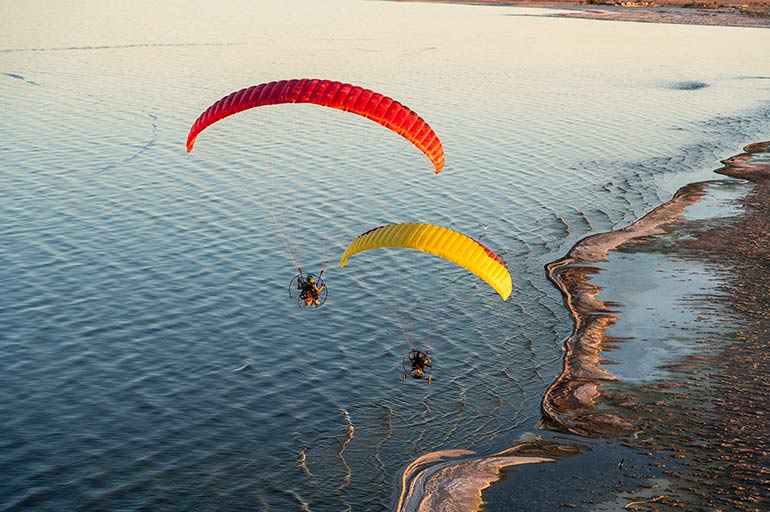
Materials
| Upper surface leading edge: |
Myungjin Textile 40 g/m²
|
| Upper surface: |
Myungjin Textile 32 g/m² |
| Lower surface: |
Myungjin Textile 32 g/m² |
Risers
| Upper lines: |
GIN TGL 80
|
| Middle lines: |
GIN TGL 125 | 145 |
| Main lines: |
GIN TGL 125 | 180 | 220 | 280 |
The Pegasus 3 is equipped with a speed system and trimmers for motorized operation. In free flight, the trimmers must not be used – such a use would be outside the limits of EN certification. With both systems, the pilot can adjust the speed behaviour of the Pegasus 3 in the respective operating mode. The low friction ring which guides the main brake line is connected via the brake arm with a handshake-knot on the C-riser. The ring can easily be replaced in case of damage. An additional lower braking ring ensures that the pilot can always choose the best position and accessibility of the brake handle, depending on the hangpoint position and engine design.
Downloads
Manual
DGAC test report
